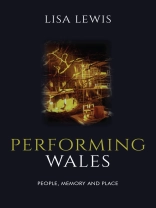Beginning from the premise that culture can be analysed as performance, this study approaches Welsh culture as performative practice and explores four distinct cultural areas – the Museum, Heritage, Festival and Theatre – concentrating on how they contribute to a shared sense of identity among participants. Through specific examples, the author traces the way cultural performance in Wales both creates and sustains specific relationships between people, memory and place, revealing reflections of ourselves and constituting our remembrances of others and of history. The discussion emphasizes the significance of performance in voicing issues of identity within a peripheral context – a position informed by the author’s own perspective as a bilingual Welsh and English speaker.
قائمة المحتويات
Preface
List of illustrations
Acknowledgments
Introduction
1 People, memory and place: ideas for a consideration of Welsh performance
Cenedl: people
Cof: memory
Lle: place
2 Amgueddfa
Amgueddfa Werin Cymru Sain Ffagan / St Fagan’s National History Museum: people, memory and place
Sain Ffagan and the performance of culture as poiesis
3 Treftadaeth
Ail-chwarae hanes, living history: making and breaking history through performance
Re-enactment
4 Gŵyl: festival
Eisteddfod: people, memory and place
Performing Wales in America’s Front Garden
5 Theatre Places
Brith Gof: place and poiesis
National theatres and their places
Theatr Genedlaethol Cymru: Wales as Place / The Place of Wales
Crossings in performance and technology: memory and kinesis in the work of Eddie Ladd
Afterword
Notes Bibliography
Index
عن المؤلف
This book is designed to appeal to scholars, students and researchers in this area, as well as general readership.












